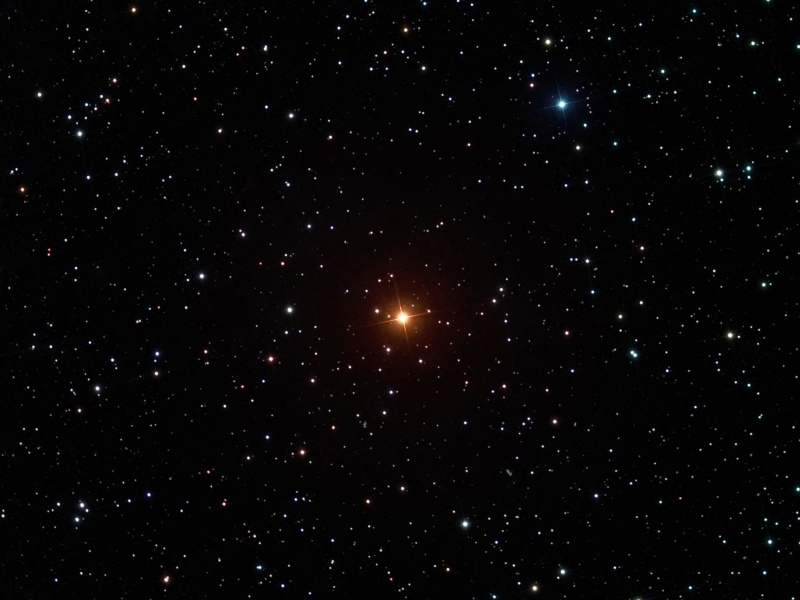
|
Credit & Copyright: Processing -
Noel
Carboni,
Imaging -
Greg Parker,
New Forest
Observatory
Explanation:
Y Canum Venaticorum (Y CVn) is a very rare star
in planet Earth's night sky.
It's also very red, exhibiting such a remarkable spectrum
of light, 19th century astronomer
Angelo
Secchi dubbed it
La Superba.
Located 710 light-years away in northern constellation
Canes Venatici
(the Hunting Dogs), the star varies in brightness over
a period of about half a year.
Near maximum, it becomes just bright enough to see with the
unaided eye, but the star's beautiful red hue is
easy
to see in binoculars or a small telescope.
In fact, La Superba is among the brightest of the
carbon stars -
cool, highly evolved
red
giant stars with exceptional abundances of carbon.
The carbon is created
by helium fusion near the stellar core
and dredged up into the stars' outer layers.
The resulting overabundance of simple carbon molecules
(like CO, CN, C2) in the atmospheres of carbon stars strongly absorbs
bands of bluer light and gives these stars a deep red color.
La Superba is loosing its carbon-rich atmosphere
into the surrounding
interstellar material through a strong stellar wind,
and could be near the beginning of a transition
to a planetary nebula phase.
|
January February March April May June July August September October November December |
| ||||||||||||||||||||||||||||||||||||||||||||||||
NASA Web Site Statements, Warnings, and Disclaimers
NASA Official: Jay Norris. Specific rights apply.
A service of: LHEA at NASA / GSFC
& Michigan Tech. U.
Based on Astronomy Picture
Of the Day
Publications with keywords: carbon star - variable star
Publications with words: carbon star - variable star
See also:
